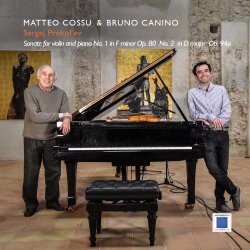
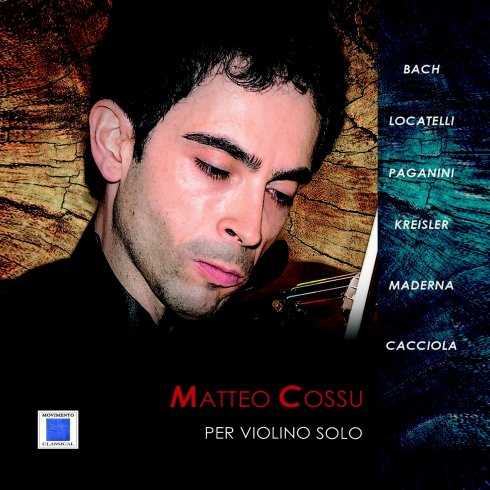
Per violino solo
Proposing a cd for solo violin is an opportunity to present this instrument in ali its techni cal possibilities and contemplate it not only in the monodie dimension , but also in the poly phonic one. The first among the great composers to realize what the violin could offer was Bach, who in his 3 Sonatas and Partitas for solo violin gave us an imperishable monument to polyphony, in which the voice ofthe violin, among the instruments closest to the human timbre, runs between the subjects of the fugues, is rounded in chords without losing the grace typical of dance . In this disc the third Andante movement is proposed
In this cd the third movement Andante of the Sonata n. 2 in A minor BWV 1003, a quiet oasis in C major within a dramatic, tormented and complex composition. Listening to this piece you have the sensation of crossing the nave of a Gothic cathedraI, in which the faithful in prayer are represented by the melody exposed to the soprano and the columns by the accompaniment of regular and intense eighth notes, which in moments of greatest tension comes to understand four sounds.
Contemporary of Bach, but different in formation and compositional mentality is Pietro Antonio Locatelli, to whom we owe one of the most decisive steps towards virtuosity. In his Arte del violino, a collection of 12 concertos for solo violin, strings and continuo, Locatelli reaches considerable levels ofdifficulty and in the final concerto in D major, atthe beginning of the first movement there is a Cadenza for solo violin characterized by a ostinato bow stroke on three and four strings, in which the theme is exposed in the various registers of the instrument. The brilliance of this extract aver time has made it a piece in its own right, called the Harmonic Labyr inth , used by violinists as an unscheduled one at the end of a concert . In this CD it is presented in the nineteenth-century transcription by Ferdinand David.
By many Locatelli is considered the precursor of the king of the violin in the nineteenth century, Paganini. Famous for the transcendental 24 Caprices for solo violin, for the 6 Concerts for violin and orchestra, for the Palpiti and the Witches. nineteenth-century starting from the choice of a theme by Paisiello. In addition to the cantability, there are notable virtuosic innovations such as the presence, during the theme, of pizzicati with the left hand as an accompaniment, tremolos with the left hand, double harmonics alternating with pizzicato, chords, passages on the fourth string, up to the overwhelming ricochet of the last variation and the Coda.
Celebrated as one of the greatest virtuosos of the early twentieth century, Fritz Kreisler stood out for his skill as a composer, arranger and transcriber. He favored dances, lively pieces and decadent melodies always characterized by a refined piano accompaniment. Recitativo und Scherzo-Capri ce is one of the few works for solo violin by Kreisler that in the lntroduction chooses a dark timbre to present an introverted atmosphere that contrasts with the lively and virtuosic Scherzo in which all the characteristics of Kreisler's violinism are present, the repeated and rebounded chords, classica! system progressions and an impactful ending.
After the dissolution of tonality and the advent of musical Expressionism, the violin continued to have a leading raie in the inspiration of composers who, thanks to the technical achievements of a centuries-old tradition, could express themselves with a wide range of effects, timbres and dynamics.
Bruno Maderna dedicated Pièce pour lvry to the great lsraeli violinist lvry Gitlis; listening to this piece it seems that the composer wants to capture the listener in a meditation where the interpreter has the role of mediator. The dynamic indications are maniacally precise, the values of the notes must be respected with absolute care, the contrasts required ofthe instrument must be interpreted decisively; where the dissonances seem to have the upper hand, a calm melody follows. Characterized by moments of great technical commitment for the performer, the Pièce stands out among the compositions for solo violin of the second half of the twentieth century for its originality, style and lyricism; to underline the correspondence between the initial dissonant double shorts and the final double harmonics, as if the piece opened with a sigh and ended with another more suffused sigh. The disc concludes with Frame IV by Raffaele Cacciola taken from the work of Columbus's shoe. In this technically and musically difficult sequence Cacciola is inspired by Petrassi's violin compositions, using clear engravings, recurring intervals and many double strings. The piece is divided into four parts, a violent incipit is followed by a lighter episode with almost seamless fast notes; after a lyrical interlude in which a certain loneliness is expressed, the piece ends with a fiery and brilliant Coda again.

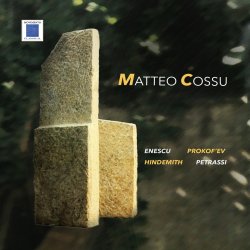
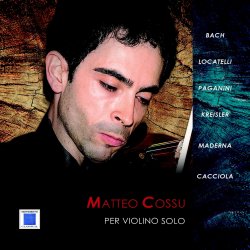
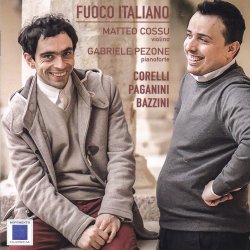
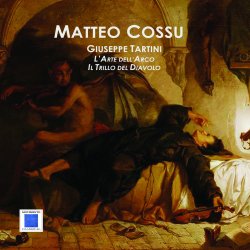
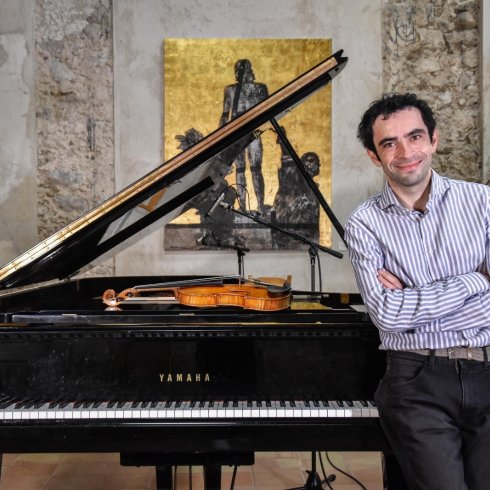
MATTEO COSSU
Started studying violin at a very young age, graduating from the Conservatorio “Morlacchi” in Perugia under the guidance of Ge org Mönch. He continued his education at the Ac cademia di Santa Cecilia in Rome, obtaining the high-level diploma in violin with Sonig Tchake rian and in chamber music with Rocco Filippini; he also perfected his studies with Carlo Maria Parazzoli, Pier Narciso Masi, Pierre Amoyal, Giu liano Carmignola and the Trieste Trio. As a soloist and in violin and piano duo he performed at the Chigi Saracini Hall in Siena, the Revoltella Museum in Trieste, the Kleines Studio in Salzburg, the Église des Gésuites in Sion, the Waikato Museum in Hamilton (New Zealand), for the Ita lian Cultural Institutes of Vienna, Sydney, Hong Kong. With the Orquestra Sinfónica del Estado de México he played the Concerto for Violin and Or chestra n. 2 by Béla Bartók directed by the Master Enrique Bátiz Campbell and with the Vratza State Philharmonic the Concerto in D major op. 61 of Beethoven directed by Gabriele Pezone. He regularly collaborates with the Concerto Barocco Chamber Orchestra of Rome, with whom he performs Vivaldi’s Four Seasons as a soloist. Parallel to his activity as a musician he obtained a three-year degree in Art, Music and Entertain ment and a master’s degree in Modern Philology. He holds a PhD in musicology at the University of Pavia, regularly publishes essays and articles in specialized magazines such as Studi Musicali. He currently collaborates with the Tartini Study Center for the publication of Giuseppe Tartini’s Opera Omnia.
